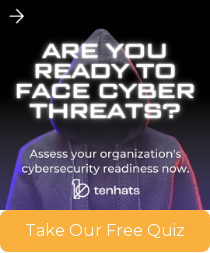5.6 billion malware attacks took place in 2020 alone.
If you haven’t already been a victim of malware, you’re one of the lucky ones. Not all targets are hit, but chances are you may have been one before.
With so much fear-mongering around cybersecurity, it’s hard to know what types of malware pose a threat and which ones aren’t as common. The truth is that not all malware is of equal threat.
This article will discuss the most common types of malware and how you can protect yourself and your business from them.
Common Types of Malware
Here are the types of malware we’re going to be discussing in this article.
- Trojan Horse
- Logic Bombs
- Spyware
- Ransomware
Many more malware threats exist, but the ones we’re discussing today are the wide varieties you’re most likely to come across. While knowing these types of malware won’t stop attacks, seeing how they work can help you avoid falling for common traps.
1. Virus
If you’ve not heard of any of the others, you’ve heard of this one. Computer viruses have been a threat to computer security before the internet even began.
As time has gone on, the viruses have evolved to become more complex. And with so many types of viruses, you can never be sure how dangerous a virus is.
Just like a real-life virus, a computer virus starts with one program and jumps to others. The more programs or computers it takes over, the more dangerous it becomes. And with growing reliance on cloud storage, a virus can be a threat to an entire business if just one employee downloads a bad file.
(A great cloud hosting service can help stop that from happening though).
Anti-virus software has become standard, though virus creators have found ways to work around these. The best thing to do is to be vigilant and avoid downloading or opening files from unknown sources.
2. Trojan Horse
Trojan horse malware is more of a delivery method than malware itself. Like the original Trojan horse, this malware seems harmless at first, but it’s chockful of danger.
Also, like the original Trojan horse, the victim brings the malware in by choice. Scammers usually design a Trojan horse to look like trustworthy software. It could look like a free version of a paid software, video game, or other legitimate software.
Unlike viruses, Trojan horses don’t always replicate themselves. But they can be even more dangerous if someone has them on your computer. After being downloaded, the owner of the horse can access your computer or system.
They could steal anything from personal information to banking logins. Some cyberthieves just put them there to spy, something we’ll talk about later. Like most malware, though, the opportunities are endless.
3. Logic Bombs
Logic bombs are usually not a standalone type of malware, but they are often in other malware types. Viruses and Trojan Horses, for example, may incorporate a logic bomb.
Logic bombs function on an if/then equation. If something happens, then the virus does something. For example, if a specific date is reached, then the attack takes place. Or, in a frequently cited situation, a programmer could include a logic bomb in a company software that triggers if the employee is fired.
Logic bombs are dangerous because they allow bad actors to plan a long play, meaning that the attack could take years to come and be difficult to trace. In a famous scenario, a Siemens contract employee successfully planted logic bombs in the programs he made so that the company would continue hiring him to fix them. He was later caught, but the ruse worked for years.
4. Spyware
Spyware is exactly what it sounds like. Downloading this software allows criminals to watch you use your computer. The malware then sends this information to the attacker.
Governments across the world have used advanced spyware for espionage. But, in the regular world, spyware creators are simply stealing information from regular Joes and regular Joes’ businesses.
Often, as mentioned before, Trojan horses can carry spyware. Sometimes spyware is just a part of a longer play. Eventually, the malware may develop into a full-scale attack like a virus or ransomware.
5. Ransomware
Now, let’s talk about the one making headlines the most lately.
Ransomware has run rampant in the past few years, targeting thousands of businesses and governments across the globe. And while business attacks are more publicized, ransomware does attack individuals as well.
Here’s how it works: a company employee downloads a malicious file or software with ransomware on it. The ransomware then halts business by encrypting the company’s data, essentially taking their entire IT infrastructure hostage.
Then, the software shows a warning, usually on a backend of a website, that the criminals will not return the data until the company pays a ransom. The ransom can range from hundreds to millions of dollars, depending on the size or wealth of the target.
Many companies have had to pay the ransom to return their stolen data. Recently, Acer suffered a $50 million ransomware attack, the most expensive ransomware attack to date.
As with other malware, the best safety precaution is to avoid downloading anything from an unreliable source. Companies can also update their IT infrastructure, create leveled access, and install a disaster recovery plan to avoid large-scale attacks.
Protect Your Company from Malware
Now that you know a bit about the most common types of malware and how to protect yourself, you might be wondering what the next steps are.
Get started by checking out this free ransomware simulator to test your network’s security. And for more tips, read our cybersecurity for remote work article.

